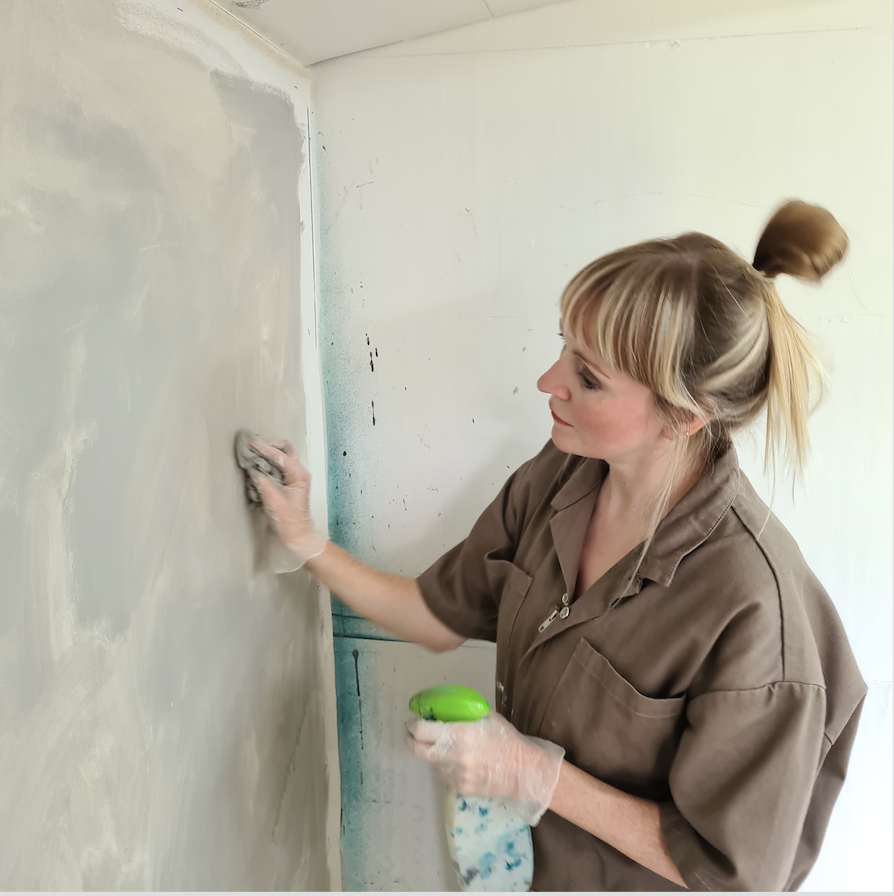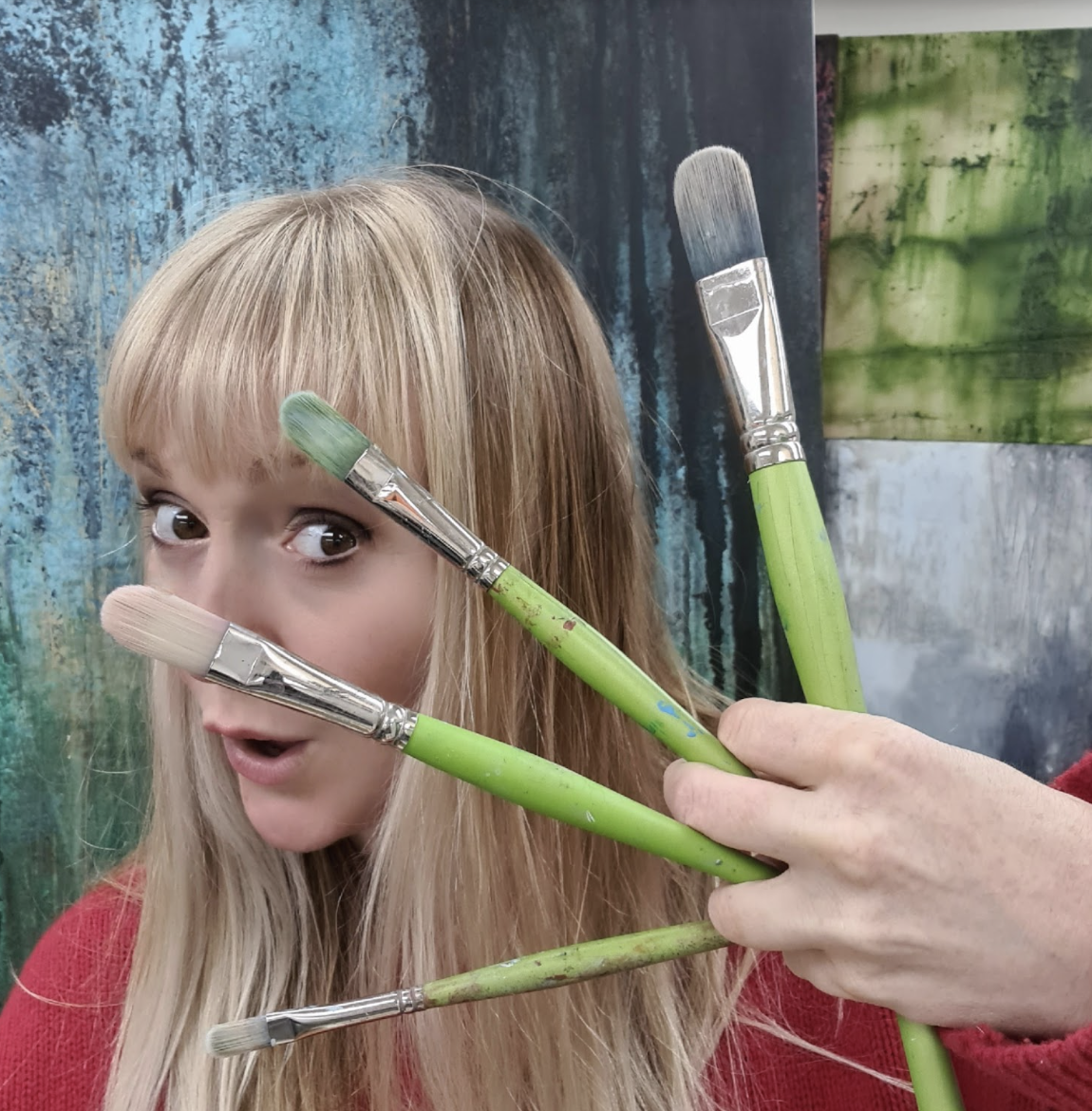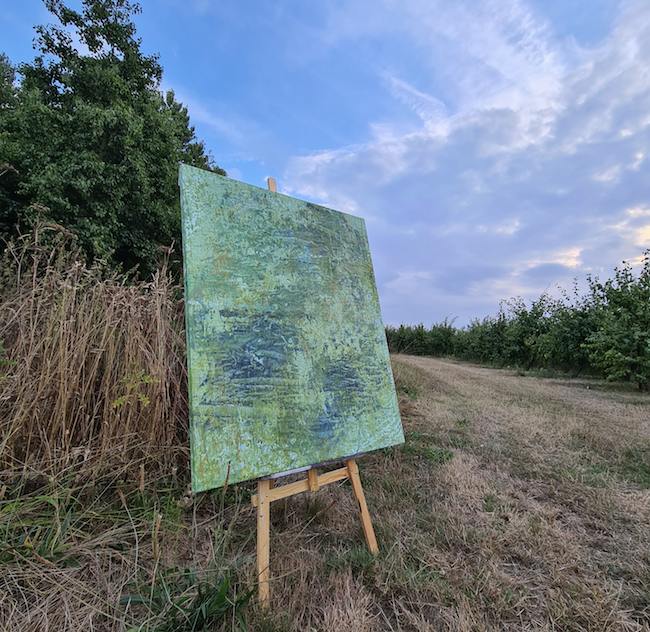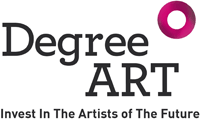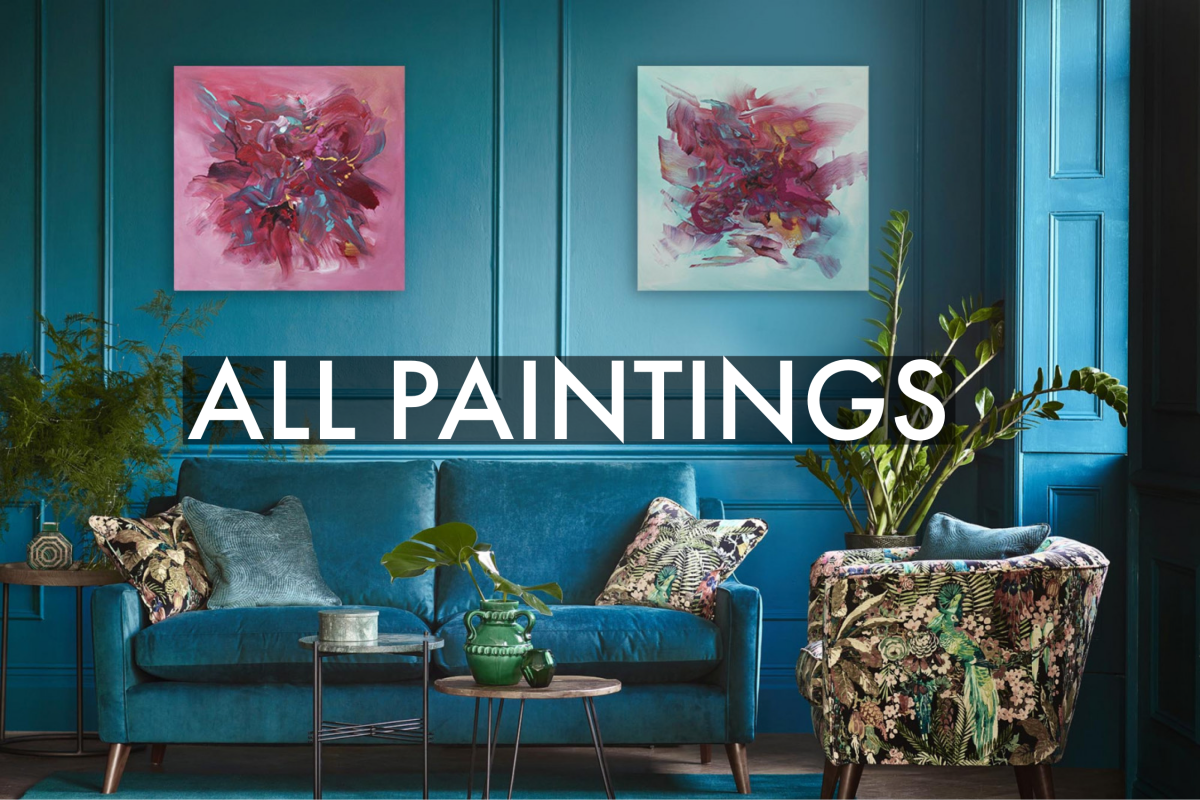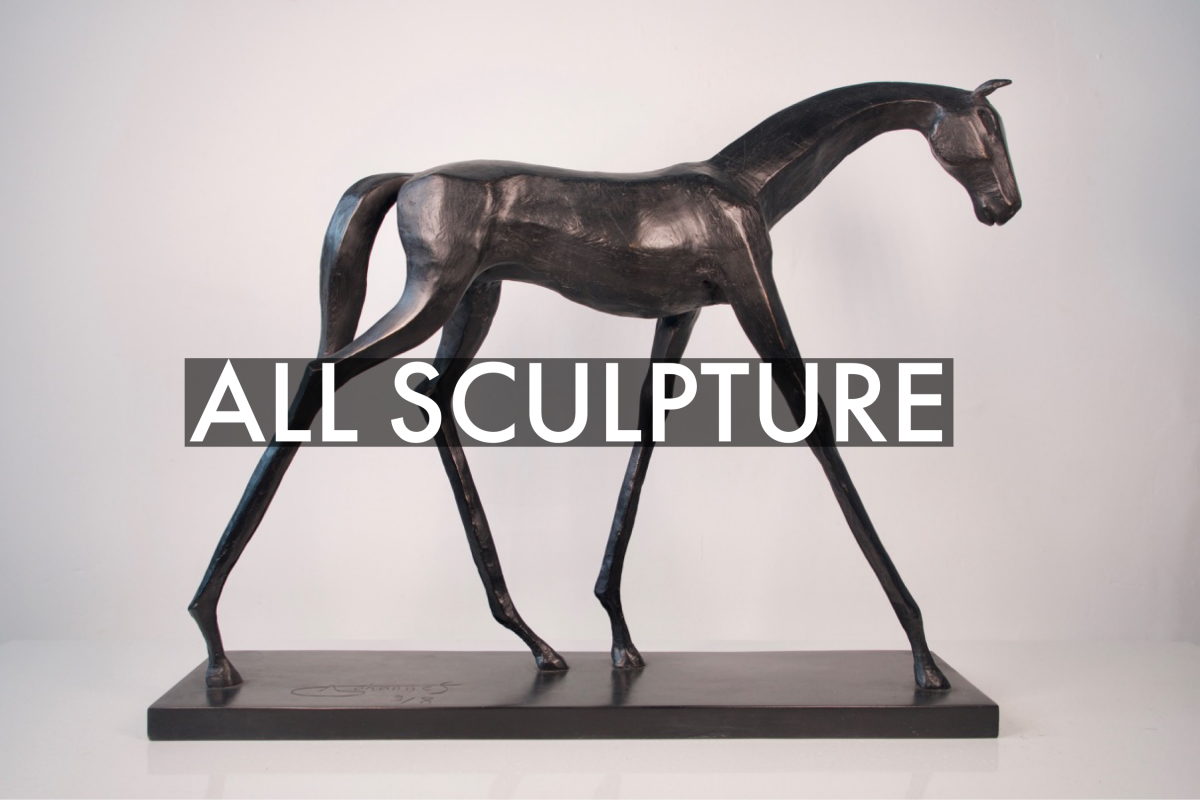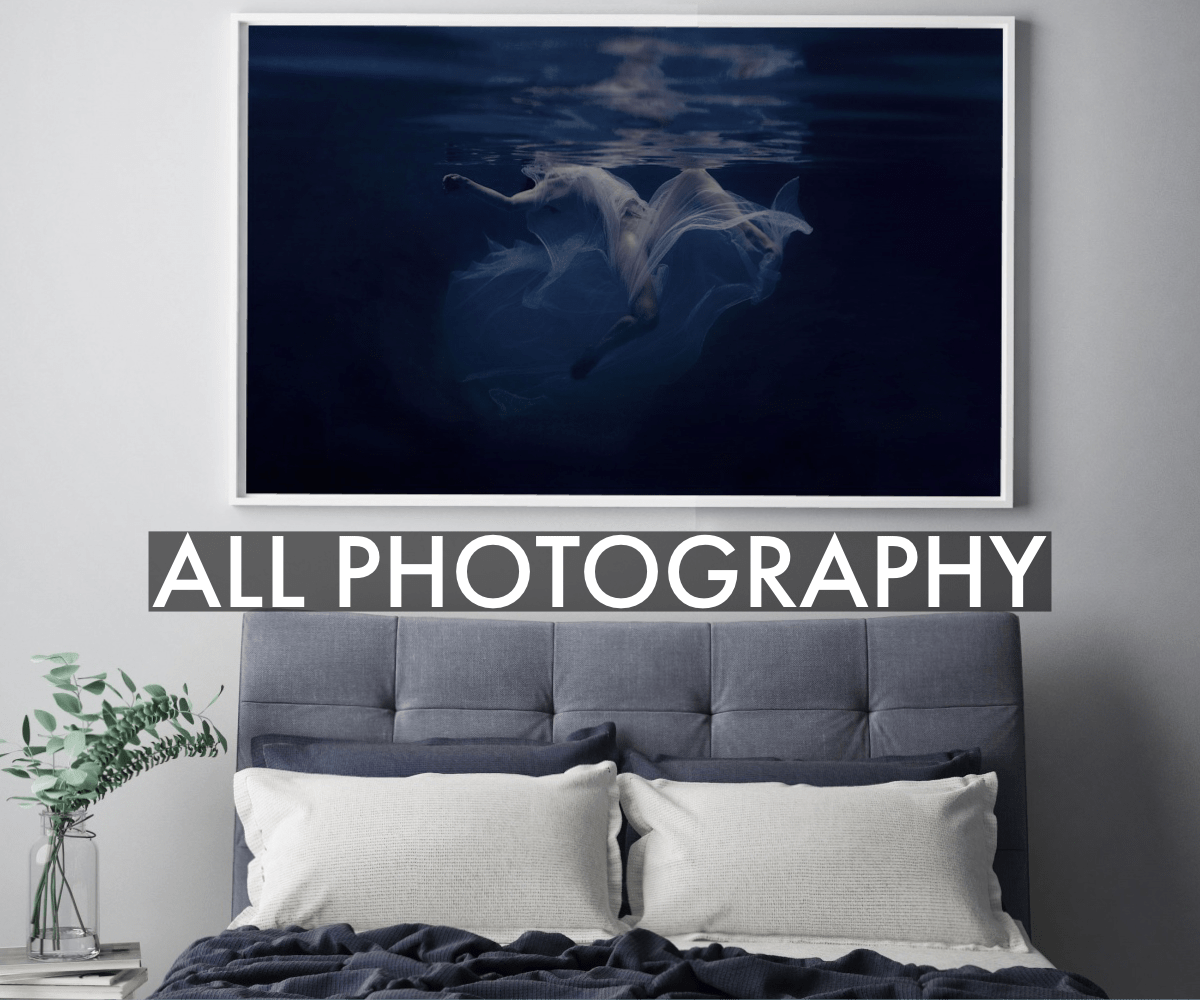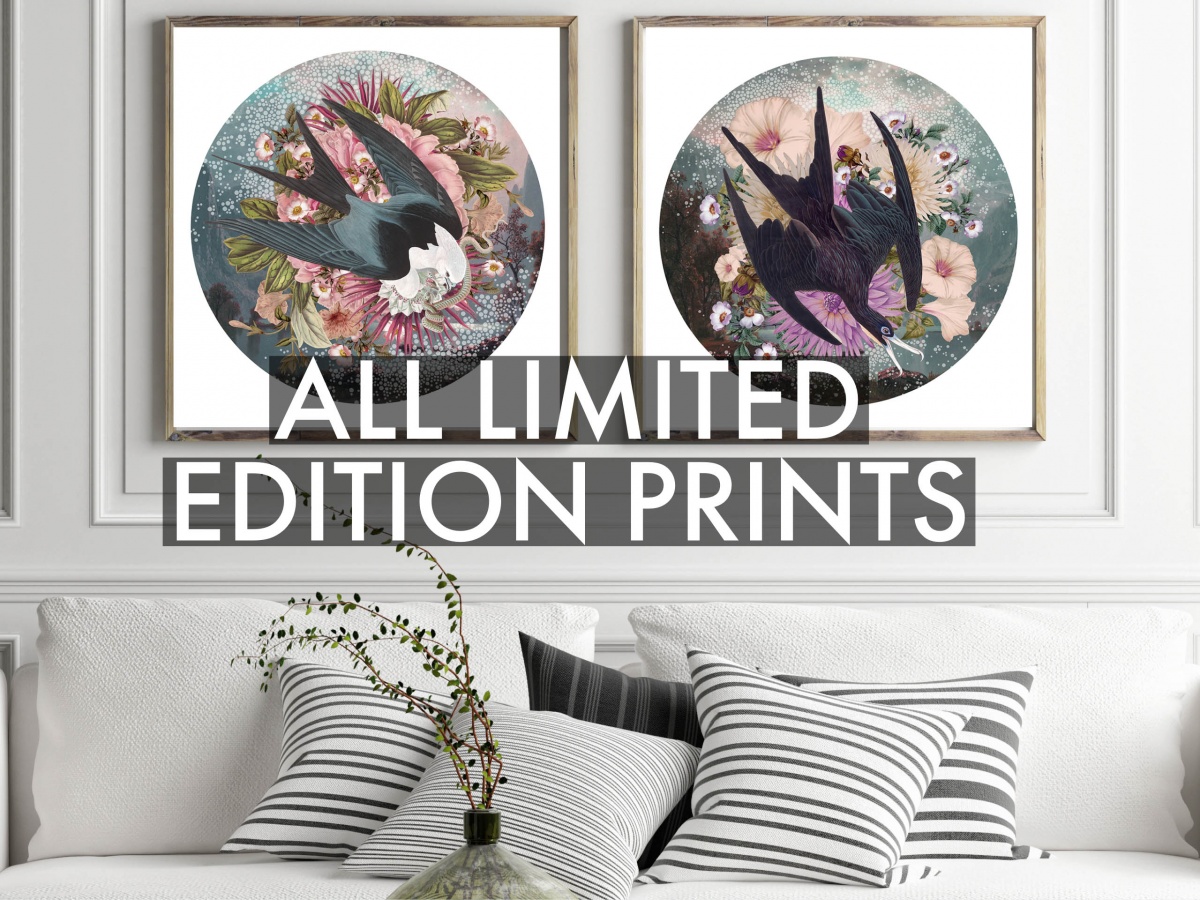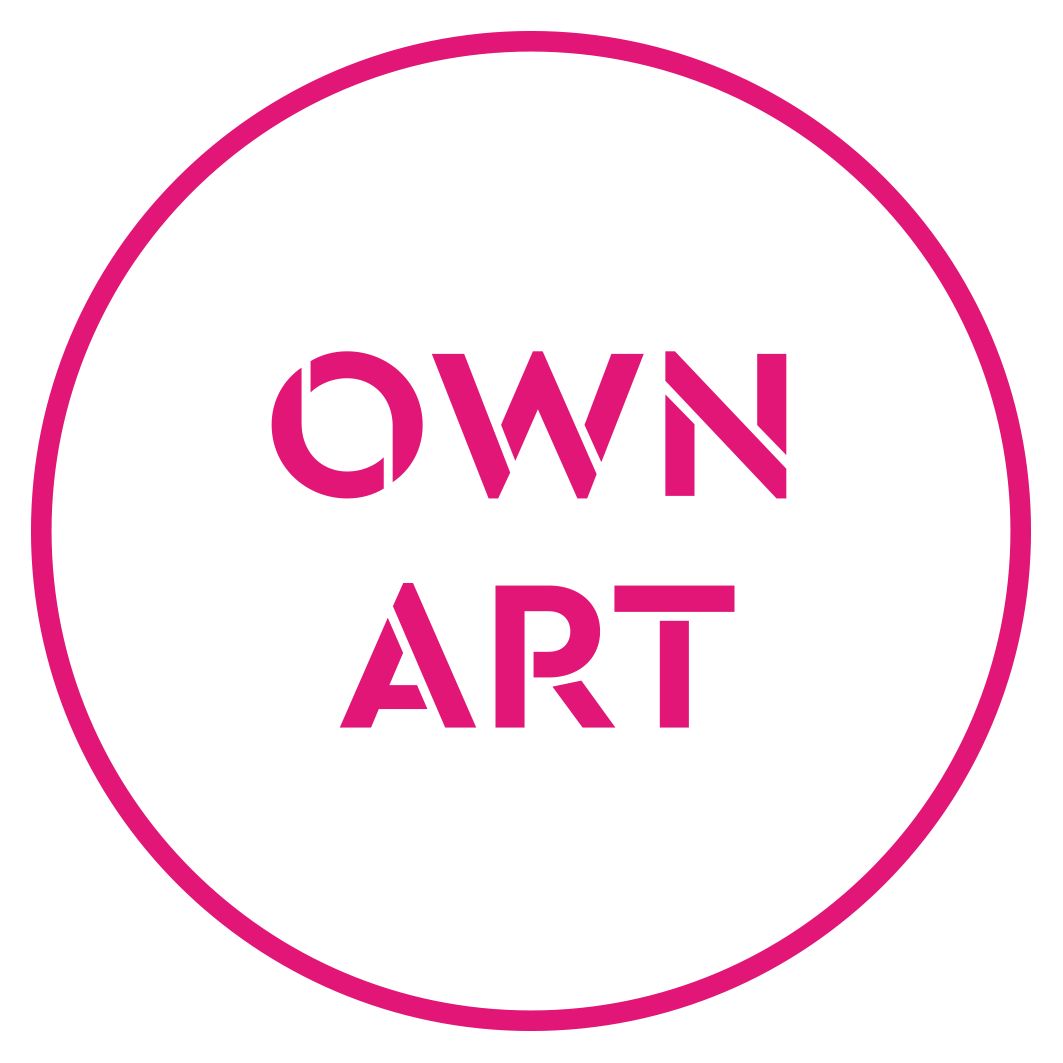Kim O'Neil is a UK artist, paint technologist and educator who graduated from Central Saint Martins with a BA Hons Fine Art. With 17 years of experience as an educator, Kim initially taught A level Art before establishing her own independent art school ‘Paint Modern,’ based in Surrey. In more recent years she has specialised in teaching abstract painting and drawing at the newest incarnation of her private art school Paint Abstract;. Kim offers online classes in cutting edge abstract art. Paint technologist and ambassador for Winsor & Newton and Liquitex since 2008, Kim has lectured and demonstrated on their behalf, so has expert knowledge of their products and their full potential. Since January 2020 Kim has taken an artistic change of direction, making large format, sophisticated multi layered abstract paintings in response her environment. Her studio is located only a few miles from the coast and on the edge of ancient woodland where she edits the paintings which are predominantly made plein air.
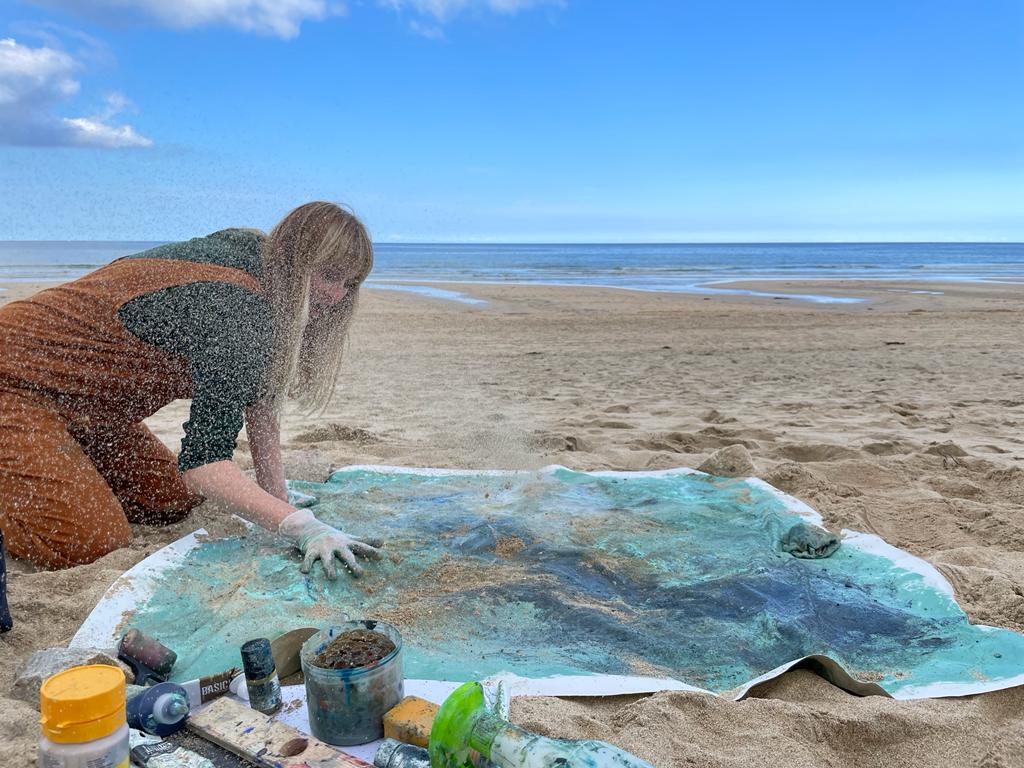
1) Which art movement do you consider most influential on your practice?
Abstract expressionism is the dominant influence on my practice. However, environmental art of the 1970s really speaks to me, including artists, like Andy Goldsworthy, who are very connected to nature in their practice.
2) Where do you go and when to make your best art?
2) Where do you go and when to make your best art? Definitely plein air in nature. Flow and connection are the most important parts of my process. I set up with an unstretched canvas in a field, on the beach or in a wood. This is why my painting contains natural elements like sand, dried grasses etc. Everything around me is my studio, including using blades of grass to thwack paint onto canvas. I even immerse paintings in the sea, a river or leave them out in the rain to accomplish biomorphic marks within the painting.
3) How do you describe your 'creative process'?
Since January 2020 I have taken an artistic change of direction, making large format, sophisticated multi layered abstract paintings in response to my environment. I couple my idiosyncratic mark making with using natural elements to create biomorphic patterns, for example immersing the painting in the sea’s current, leaving one layer of the painting in the rain and using twigs and blades of grasses as a delivery system for the paint. I like to combine organic marks with more sophisticated painting techniques that create the finish. My studio, located only a few miles from the coast and on the edge of ancient woodland, is where I edit the paintings which are predominantly made plein air.
4) Which artist, living or deceased, is the greatest inspiration to you?
Anselm Kieffer for obvious reasons; using organic materials in the painting, textured and multi layered work. I am also heavily influenced by Hieronymus Bosch, reflected in the colour palette I use. I remember being taken with the Bosch paintings in the Rijks museum, as a teenage art tourist, and similarly the dark Goya’s in the Prado gallery. These are artists who weren’t afraid to let their darkness show.
5) If you weren't an artist, what would you do?
I work as educator and run my own art school Elements School of Art, so I guess I’d do that. But in another life, I think I would have trained as a psychiatrist had I not gone into the arts.
6) What do you listen to for inspiration?
I immerse myself in the environment during the process of making the painting. I listen to the calming sound of the sea, the rustle of leaves in the wind, faint sounds of cars in the distance, birds and nature in general.
7) If you could own one artwork, and money was no object, which piece would you acquire?
Hieronymus Bosch’s Garden of Earthly delights. There’s so much to look at in this painting, I could stare at it all day!
8) If your dream museum or collection owner came calling, which would it be?
I like the idea of being owned by the nation. Owned by the people or a collection that is sponsored by a departmental public body . So, The Tate or National Gallery.
9) What is your key piece of advice for artists embarking on a fine art or creative degree today?
Not to be overly influenced by others and to ultimately to follow your own direction. Tutors and peers may have helpful advice but a true art practice continues long after graduation. Choose something that you want to stick with not a projected idea of what others think you should do.
10) What is your favourite book of all time (fiction or non fiction)?
Moon Tiger by Penelope Lively, it plays with the ideas of time and space. It captures moments then shows how the perception of those moments change with time. This resonates we me as my practice is about capturing the sensory experience of a moment in time.
11) If you could hang or place your artwork in one non-traditional art setting, where would that be?
I really want to use an agricultural barn as my next exhibition venue, I can see the paintings looking amazing in a site specific location. I wish to alter the traditional cycle of art being made in the country but only being shown in the city.
12) What was the biggest lesson your university course or time studying taught you?
Art education, personal experience in the art world and teaching art have taught me to never plateau, always keep developing your practice.
13) And finally, if we were to fast forward 10 years, where would we find you?
I think the best laid plans are left unplanned. One of my principal goals is to not plan or project an idea on my future, the magic of life is to let it unfold. I know my practice will develop but I can’t imagine how. I need it to be organic and unfold spontaneously.
Learn more about Kim and discover her collection of paintings

